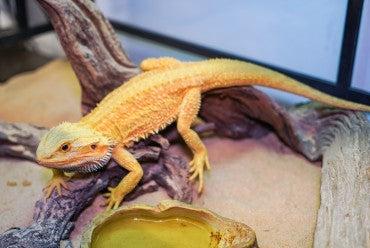At Repti-Zoo, we believe that every snake deserves a habitat as unique and extraordinary as they are. Custom snake enclosure go beyond providing a living space – they offer a dream habitat tailored to the specific needs and preferences of your serpentine companion. In this comprehensive guide, we'll explore the art of designing custom snake enclosures that elevate the well-being and happiness of your reptilian friend.
Understanding Snake Behaviors
1. Species-Specific Requirements
Different snake species have unique behaviors and habitat preferences. Whether you have a ball python, corn snake, or boa constrictor, understanding their natural behaviors is crucial for designing a habitat that caters to their specific needs.
2. Thermoregulation Needs
Snakes are ectothermic creatures that rely on external heat sources for temperature regulation. A well-designed enclosure should include temperature gradients, providing both warm and cool areas to allow snakes to control their body temperature.
Designing a Custom Snake Enclosure
1. Enclosure Size and Shape
Consider the size and activity level of your snake when choosing the enclosure. A spacious enclosure allows for movement and exploration, while the shape can be customized to accommodate climbing or burrowing behaviors based on the snake species.
2. Substrate Selection
Select a substrate that aligns with the snake's natural environment. Options include aspen bedding, cypress mulch, or coconut coir. The substrate not only provides a comfortable surface but also facilitates natural behaviors like burrowing.
3. Temperature Control and Lighting
Incorporate heating elements such as heat pads or lamps to create temperature gradients. Ensure that the snake has access to both basking spots and cooler areas. Full-spectrum lighting, while not always necessary, can mimic natural daylight cycles and enhance the overall environment.
4. Hiding Places and Enrichment
Snakes appreciate hiding spots for security and stress reduction. Custom enclosures can include natural-looking hides, rock formations, or artificial plants to create a visually appealing and enriching environment.
5. Climbing Structures
For arboreal snakes, consider adding climbing structures like branches or platforms. These structures encourage natural behaviors and provide opportunities for exercise and exploration.
Feeding and Hydration
1. Proper Feeding Areas
Designate specific areas for feeding to create a routine and minimize stress during mealtimes. This can be a separate section within the enclosure or a feeding box.
2. Water Access
Provide a clean and accessible water dish for hydration. Ensure that the dish is of an appropriate size and placed in a location that encourages regular drinking.
Maintenance and Cleaning
1. Regular Spot Cleaning
Perform regular spot cleaning by removing waste, shed skin, and uneaten food. This helps maintain a clean and hygienic environment for your snake.
2. Periodic Deep Cleaning
Schedule periodic deep cleanings to sanitize the entire enclosure. This involves removing the snake, cleaning all surfaces, and replacing the substrate to prevent the buildup of bacteria.
Conclusion
In conclusion, designing a custom snake enclosure involves careful consideration of the snake's species, behaviors, and natural habitat. By creating a dream habitat tailored to your snake's specific needs, you contribute to their overall well-being, happiness, and longevity.



